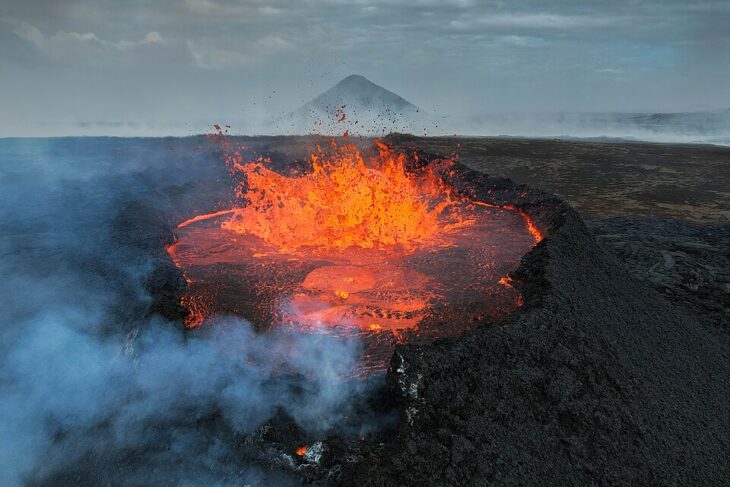Geologists have found rocks that formed in the deep ocean during the early Jurassic Period, about 180 million years ago, suggest a lack of oxygen in the ocean. These rocks contained more light atoms of carbon, known as carbon-12, than heavy atoms of carbon, known as carbon-13. Carbon-13 is heavier than carbon-12 because it has one more neutron. Atoms of the same element with different numbers of neutrons are called isotopes, and a decrease in the proportion of carbon-13 to carbon-12 in a rock sample is known as a negative carbon isotope excursion.
Scientists in the past have shown that the release of light carbon-12 into the atmosphere during the early Jurassic, also known as the Toarcian, doubled carbon dioxide levels and raised the ocean temperature by 5°C, or about 9°F. Geologists refer to this warming event as the Toarcian oceanic anoxic event.
Unfortunately, scientists don’t know the source of this carbon-12 because of the lack of a proper time frame for the Toarcian event. Past researchers estimated that the rock section with the low carbon isotope ratios represented anywhere between 300,000 years and 1.5 million years. The unknown time frame makes it difficult for scientists to compare the Toarcian warming event with more recent warming events. Therefore, an international research team recently used high-precision dating methods to accurately determine how long it lasted.
They analyzed the Sakuradachi-dani section in the Tabe Basin of Japan. During the early Jurassic period, this area was underwater, near the coast, where mud, sand, and organic matter accumulated. Within the 90-meter-thick section (around 300 feet thick) was a layer containing the negative carbonate isotope excursion. The layer spanned between about 33 meters and 45 meters in depth, within the Sakuraguchi-dani.
The researchers also found 3 layers of rock formed from volcanic ash above and below the layer containing the carbon isotope excursion. The upper ash layer sat at around 16 meters in the rock section, while the lower ash layers were found at around 49 and 51 meters. The research team used a mineral in the volcanic ash to date the crystallization ages of the layers with high precision. They reported that the volcanic ash layers were approximately 182.3 million years old, 182.5 million years old, and 182.9 million years old, from youngest to oldest.
These ages suggested that the 62 meters (around 200 feet) of rocks between the ash layers were deposited over a total of 400,000 years. Based on how much sediment accumulated during this time, the researchers calculated that the rock section with the carbon isotope excursion would have taken over 300,000 years to form. They deduced that the actual duration of the Toarcian oceanic anoxic event was much shorter than previously thought, lasting no longer than 417,000 years and a minimum of 169,000 years.
With this information, the team attempted to connect the Toarcian warming event and its carbon isotope excursion to a source. They deduced that the event was at least partially linked to volcanic activity in the early Jurassic, which was precisely dated to this time using a similar method. They hypothesized that the rapid flow of magma to the surface scorched and changed the makeup of surface rocks. This would have forced the rocks to release any carbon dioxide and methane they contained into the atmosphere and ocean, warming the climate and releasing light carbon-12 in the process.
The researchers concluded that volcanism likely caused the Toarcian oceanic anoxic event. They stated that scientists in the past have proposed a volcanic mechanism for other similar warming events. They suggested that future scientists investigate the direct consequences of the Toarcian oceanic anoxic event and how much of it was caused by a volcanic release of carbon.


